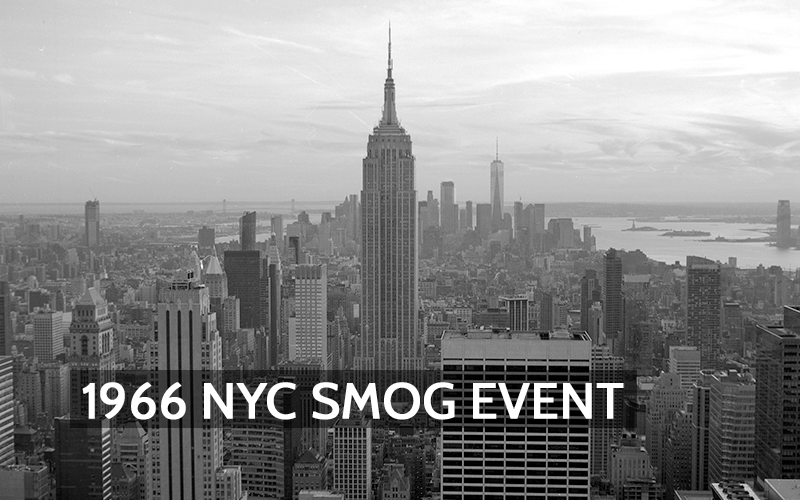In late November 1966, New York City experienced a severe smog event that was brought on by a unique combination of weather patterns. This incident, occurring over Thanksgiving weekend, had significant health impacts on New Yorkers and spurred several policy changes at the federal level.
What Happened
From November 23 to 26, 1966, a dense smog enveloped New York City and its metropolitan area. The smog reduced visibility and filled the air with harmful pollutants, including carbon monoxide, sulfur dioxide, and particulate matter. This was the city’s third major smog event, following similar incidents in 1953 and 19631.
Why Did The Smog Get Trapped
The main cause of the 1966 smog was a temperature inversion—a meteorological phenomenon where a layer of warm air traps cooler air beneath it, preventing pollutants from dispersing. This inversion trapped emissions from vehicles, industrial sources, and residential heating systems, leading to the accumulation of pollutants at ground level1.
What Were The Health Impacts
Initially, city officials downplayed the health effects of the smog. However, subsequent studies revealed significant adverse effects on residents throughout the city. A December 1966 study estimated that 10% of the city’s population experienced symptoms such as eye irritation, coughing, and respiratory distress. Further analysis in October 1967 attributed approximately 168 deaths to the smog event, though those numbers may be misleading. The city saw a 20% rise in expected mortality the following weeks and attributed the numbers to the smog event1.
How Did Lawmakers Respond To The Smog
The 1966 smog disaster heightened public awareness of air pollution and its health risks, prompting legislative action. In December 1966, New York City strengthened its air pollution control laws, implementing stricter regulations on emissions from industrial and residential sources. At the federal level, the event contributed to the passage of the Air Quality Act of 1967 and laid the groundwork for the more comprehensive Clean Air Act of 19701. The 1966 New York City smog event was a key moment in environmental history. It exposed the dangers of unchecked air pollution and catalyzed policy reforms aimed at protecting public health and the environment.
Related Articles:
Air Quality Regulation and Standards in the United States: Addressing The Gaps
References:


